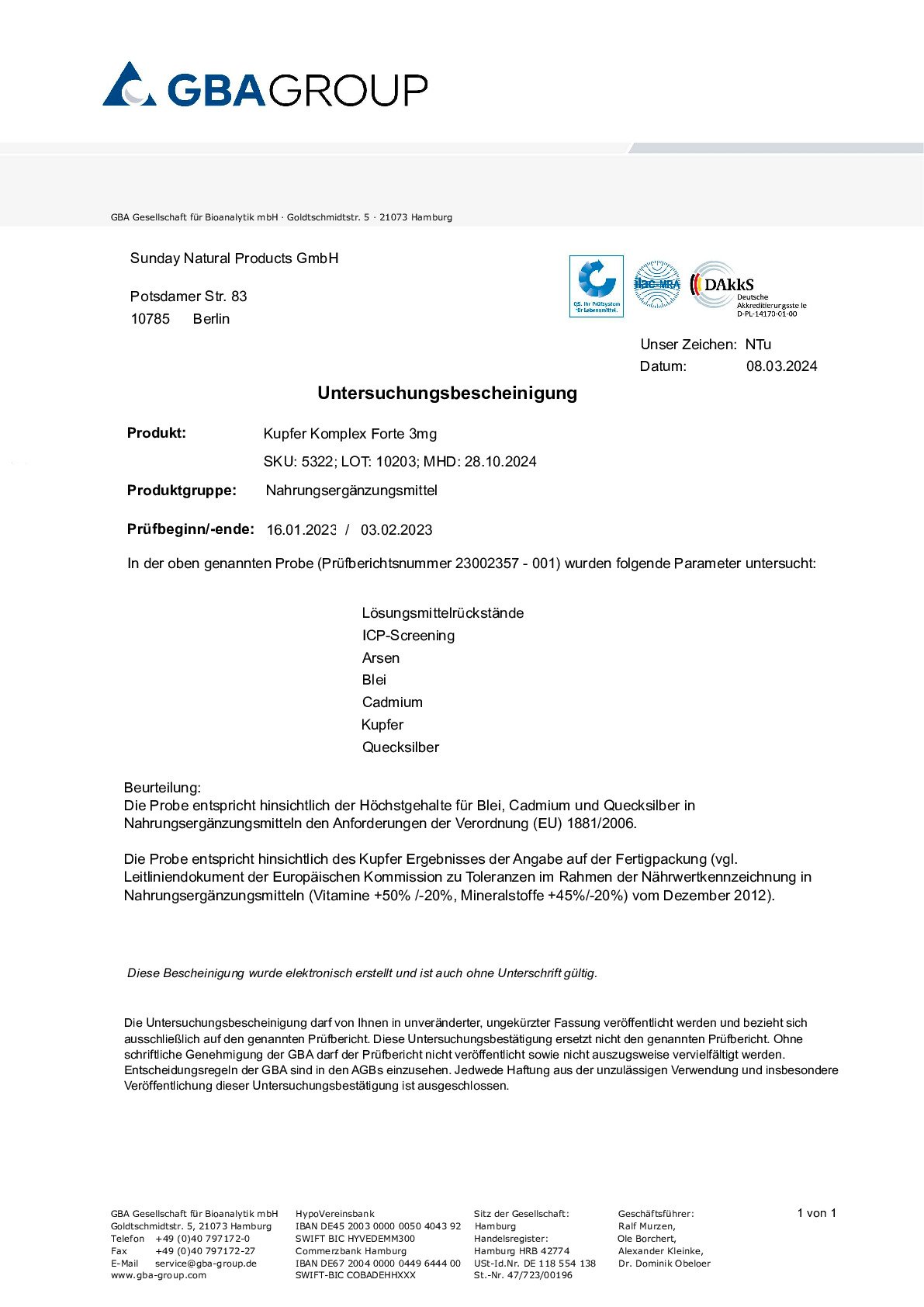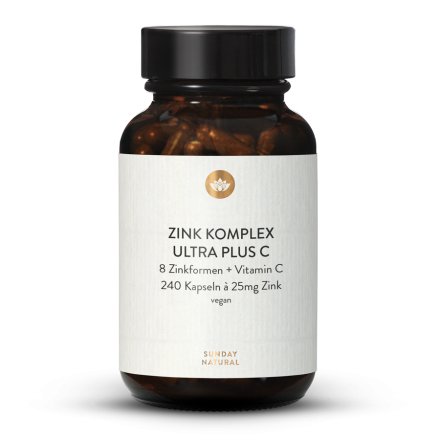Copper is a component of a range of enzymes and many redox reactions. The main function of this trace element is its contribution to haematopoiesis, energy metabolism and antioxidative defence.
Without copper, iron is unavailable for hematopoiesis, and as a component of the mitochondrial respiratory chain, copper is required for energy metabolism. As a cofactor of the antioxidant enzyme superoxide dismutase, it protects cells from oxidative stress. As a cofactor, copper is responsible for melanin production in skin and hair and contributes to the maintenance of normal connective tissue.
Our copper complex contains three forms of copper in an optimal ratio of equal parts copper citrate, copper gluconate, and copper bisglycinate. Each compound has a different effect profile within bodily copper metabolism. Just as copper never occurs isolated in natural foods, our complex offers different copper compounds for ideal absorption, bioavailability and a comprehensive supply of copper to the cells.
Copper citrate
Copper citrate is one of the most common copper compounds in food supplements. Citrate supports the absorption of copper and works together synergistically with copper in energy metabolism.
Copper bisglycinate
Our copper bisglycinate is an organic copper chelate in which copper is bonded with the amino acid L-glycine. Copper bisglycinate has a particularly high biovailability.
Copper gluconate
Copper bonded with gluconic acid as a fruit acid chelate rounds off the mixture of organic copper compounds. Gluconate is well-absorbed by the body and correspondingly supports the absorption of the trace element bonded with it.
The combination of these three copper compounds, rather than isolates, maximises their absorption into the body as well as the effect of copper on energy metabolism (citrate) and blood and collagen formation (bisglycinate).
According to the European Food Safety Authority (EFSA):
Copper contributes to:
- Maintenance of normal connective tissue
- Normal energy metabolism
- Normal functioning of the nervous system
- Normal hair pigmentation
- Normal iron transport in the body
- Normal skin pigmentation
- Normal function of the immune system
- The protection of cells from oxidative stress






















